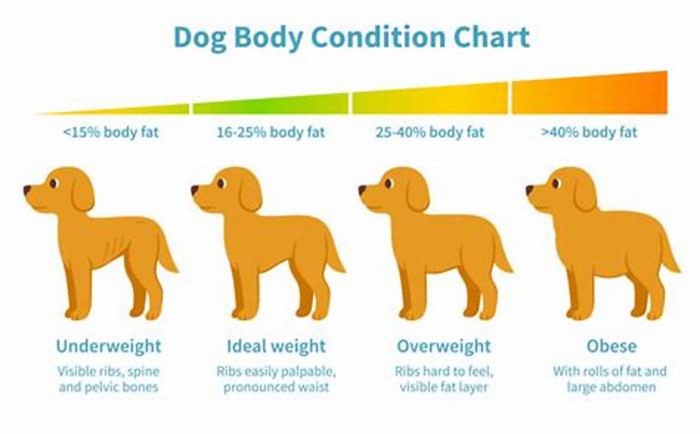Are Labradors big dogs

Are Labradors Big Dogs
Labradors, also known as Labrador Retrievers, are a popular breed of dogs known for their friendly and outgoing nature. They are highly versatile and are often used as service dogs, therapy dogs, and search and rescue dogs. One common question that many prospective dog owners have is whether Labradors are considered big dogs. In this article, we will explore the Labrador Retriever breed in detail, focusing specifically on their size and physical characteristics, factors that contribute to their size, and the impact of size on various aspects of Labrador ownership.
Understanding the Labrador Retriever breed
The Labrador Retriever breed originated in Newfoundland, Canada, where they were originally used as fishing dogs. They were trained to assist fishermen in retrieving fish from the water, hence their name. Today, Labradors are known for their intelligence, obedience, and friendly nature, making them great family pets.
The size and physical characteristics of Labradors
Labradors are a medium to large-sized breed. According to the breed standards set by the American Kennel Club (AKC), male Labradors typically stand between 22.5 and 24.5 inches tall at the shoulder, while females are slightly smaller, ranging from 21.5 to 23.5 inches. Their weight can vary between 55 and 80 pounds, with males generally being heavier than females.
Labradors have a well-balanced and sturdy build. They have a broad head, a strong jaw, and expressive eyes. Their ears hang down and are located slightly above eye level. Their body is muscular, and they have a thick, water-resistant double coat that comes in three main colors: black, yellow, and chocolate.
Labradors are known for their friendly and outgoing personalities. They are often described as being good-natured, gentle, and eager to please. Labradors are highly sociable dogs and enjoy being around people and other animals. They are often used as therapy dogs, search and rescue dogs, and guide dogs due to their intelligence and trainability.
In addition to their friendly nature, Labradors are also known for their high energy levels. They are an active breed that requires regular exercise to keep them physically and mentally stimulated. Labradors enjoy activities such as swimming, playing fetch, and going for long walks or runs. Without enough exercise, Labradors can become bored and may exhibit destructive behaviors.
How Labradors compare to other dog breeds in terms of size
When it comes to comparing Labradors with other dog breeds in terms of size, Labradors typically fall into the medium to large category. However, size can vary significantly between individual dogs within the breed. Its important to note that Labradors are not considered giant dogs like Great Danes or Saint Bernards, but they are larger than small and toy breeds.
If youre looking for a compact dog that can easily fit in your lap, Labradors may not be the best choice. However, their size makes them well-suited for a variety of activities such as outdoor adventures, swimming, and retrieving games.
Factors that contribute to the size of Labradors
Several factors contribute to the size of Labradors, including genetics, diet, exercise, and overall health. The genetic makeup of a Labrador plays a significant role in determining their size. The size of the parents and previous generations can influence how big or small a Labrador will grow.
Nutrition and exercise also play a crucial role in determining a Labradors size. A well-balanced diet and regular exercise can help ensure that a Labrador develops at a healthy rate and reaches their full potential size. Its essential to provide proper nutrition and avoid overfeeding to prevent excessive weight gain, which can lead to health issues in the long run.
The average weight and height of Labradors
As mentioned earlier, the average weight of adult Labradors typically ranges between 55 and 80 pounds. However, its important to note that there can be variations within this range. Some Labradors may fall slightly below or above the average weight, depending on factors such as genetics, metabolism, and overall health.
In terms of height, male Labradors usually stand between 22.5 and 24.5 inches tall at the shoulder, while females are slightly shorter, ranging from 21.5 to 23.5 inches. These measurements provide a general guideline, but individual variations can occur.
Are Labradors considered large or medium-sized dogs?
Labradors are typically considered medium to large-sized dogs. The range of size within the Labrador breed allows for some flexibility in categorizing them. While they may not be as massive as some giant breeds, Labradors are larger than small and toy breeds.
Their size makes them suitable for various activities, including being ideal companions for outdoor enthusiasts. They have the strength and stamina to engage in physical activities while maintaining a friendly and adaptable temperament.
Exploring the genetics behind Labrador sizes
Genetics play a significant role in determining the size of Labradors. Like all living organisms, dogs inherit their physical traits from their parents. If both parents are large Labradors, it is more likely that their offspring will also be larger in size.
However, its important to note that genetics can be complex, and variations in size can occur even within the same litter. Sometimes, smaller parents can produce a larger pup or vice versa. These variations are a result of the combination of genes that Labrador Retrievers inherit from their ancestors.
Does gender influence the size of Labradors?
Gender can have some influence on the size of Labradors, with males typically being larger and heavier than females. However, its important to note that there can be individual variations within each gender.
When considering Labradors for adoption or purchase, its essential to consider the size of the specific dog you are interested in rather than relying solely on gender-based assumptions. If size is a significant factor for you, discussing your preferences with a reputable breeder or adoption agency can help ensure you find a Labrador that fits your desired size range.
The growth stages of Labradors and their impact on size
The growth stages of Labradors can have a significant impact on their ultimate size. Like all puppies, Labradors experience rapid growth during their early months. During this time, its important to provide them with proper nutrition and monitor their growth to ensure they are developing at a healthy rate.
As Labradors grow, their bones and joints are still forming and may be more susceptible to injury. Care should be taken to provide them with adequate exercise while minimizing excessive strain on their developing bodies. Consultation with a veterinarian can help determine appropriate exercise levels for Labrador puppies to promote healthy growth and development.
Debunking common misconceptions about Labrador sizes
When it comes to the size of Labradors, there are several common misconceptions that deserve debunking. One misconception is that all Labradors are huge and difficult to handle. While Labradors are generally larger than small and toy breeds, they are not classified as giant dogs.
Labradors can vary in size within the breed, and its essential to evaluate each individual dog rather than making assumptions based on breed stereotypes. Its also worth noting that a well-trained and properly socialized Labrador can be easier to handle regardless of their size.
Understanding the variations in Labrador sizes within a litter
Even within the same litter, Labrador puppies can vary in size and physical characteristics. This variation occurs due to the combination of genes inherited from their parents. Some puppies may take after their larger parent, while others may resemble the smaller parent.
Its important to consider individual puppies within a litter and assess their size, temperament, and other factors when choosing a Labrador. Reputable breeders can provide insights into individual puppies traits to help potential owners make informed decisions based on their preferences.
Factors to consider when choosing a Labrador based on size preferences
Choosing a Labrador based on size preferences involves taking several factors into consideration. Size can impact various aspects of Labrador ownership, including lifestyle compatibility and space requirements.
If you have specific size preferences, its essential to communicate them with a reputable breeder or adoption agency. They can guide you in selecting a Labrador that best fits your desired size range, ensuring a better match between your lifestyle and the dogs needs.
Is a big Labrador suitable for apartment living?
Apartment living with a big Labrador is possible, but it requires careful consideration and planning. Labradors, regardless of size, are energetic dogs that require regular exercise to stay healthy and content. This means that apartment dwellers with Labradors need to be dedicated to providing ample physical activity.
Living in an apartment with a big Labrador may necessitate more frequent and longer walks, as well as finding appropriate outdoor spaces for play and exercise. Its also crucial to create a stimulating indoor environment for your Labrador with toys, puzzles, and mental stimulation to prevent boredom and destructive behavior.
The benefits and challenges of owning a big Labrador
Owning a big Labrador comes with several benefits and challenges. Big Labradors often have a strong presence and can make excellent companions and family dogs. Their larger size can contribute to their ability to perform tasks such as retrieving, guarding, and assisting individuals with disabilities.
However, big Labradors also require more physical space, exercise, and potentially more food than smaller breeds. They may take up more space in your home and require a larger crate or bed. Additionally, their size can make them more difficult to control, especially if not properly trained and socialized from a young age.
Training tips for handling a large-sized Labrador
Training plays a crucial role in handling a large-sized Labrador. Early obedience training and socialization are essential to ensure that your Labrador grows up to be a well-behaved and manageable companion.
When training a large-sized Labrador, its important to use positive reinforcement techniques, such as rewards and praise. Consistency and patience are key. Its also beneficial to enroll your Labrador in obedience classes or seek guidance from a professional dog trainer who specializes in positive reinforcement methods.
How to properly exercise and provide enough space for a big Labrador
Proper exercise and providing enough space are vital for the well-being of a big Labrador. Labradors require regular physical activity to burn off energy and maintain a healthy weight.
Long walks, jogging, swimming, and interactive games such as fetch can help keep a big Labrador mentally and physically stimulated. Providing access to a securely fenced yard or visiting a dog park can also offer additional opportunities for exercise and socialization.
The impact of size on health issues in Labradors
While Labradors are generally considered a healthy breed, size can have an impact on certain health issues. Larger Labradors may be more prone to joint issues such as hip and elbow dysplasia. These conditions can cause discomfort and mobility issues in dogs, requiring medical intervention and management.
Weight management is also crucial for big Labradors, as excess weight can contribute to joint problems and other health issues. Regular veterinary check-ups and maintaining a balanced diet can help prevent weight gain and address any potential health concerns early on.
Tips for maintaining the ideal weight and size for Labradors
Maintaining the ideal weight and size for Labradors involves a combination of proper nutrition, regular exercise, and diligent monitoring. Overfeeding or feeding inappropriate human food can contribute to weight gain, which can put stress on a Labradors joints and overall health.
Consulting with a veterinarian to determine the appropriate amount and type of food for your Labrador is essential. Regular exercise, including both structured activities and free play, helps burn calories and keeps Labradors fit. Monitoring your Labradors weight and overall body condition can help identify any changes that may warrant adjustments to their diet or exercise routine.
Finding reputable breeders who specialize in big Labradors
If you are specifically interested in obtaining a big Labrador, its important to find reputable breeders who specialize in breeding Labradors on the larger side of the breed standard. Reputable breeders prioritize the health and well-being of their dogs and carefully select breeding pairs to produce puppies with desirable traits.
When looking for a reputable breeder, consider reaching out to local Labrador clubs or organizations for recommendations. Additionally, make sure to visit the breeder in person, observe their facilities, and meet the parent dogs to ensure they are well-cared for and have the desired size traits you are seeking.
In conclusion, Labradors are generally considered medium to large-sized dogs, with males being larger and heavier than females. Size variations can occur within the breed due to factors such as genetics, nutrition, exercise, and overall health. Its essential to consider individual Labradors based on their specific size and other traits when choosing a dog. Whether you opt for a big or smaller-sized Labrador, proper training, exercise, and healthcare are key to ensuring a happy and healthy companion.
Im a dog enthusiast and creator of Doggie Connect, a blog sharing my experience caring for dogs. I love dogs and Im committed to helping others with dog care. Contact me at [email protected] for assistance.









